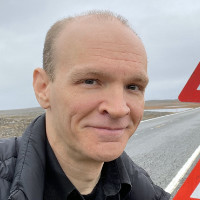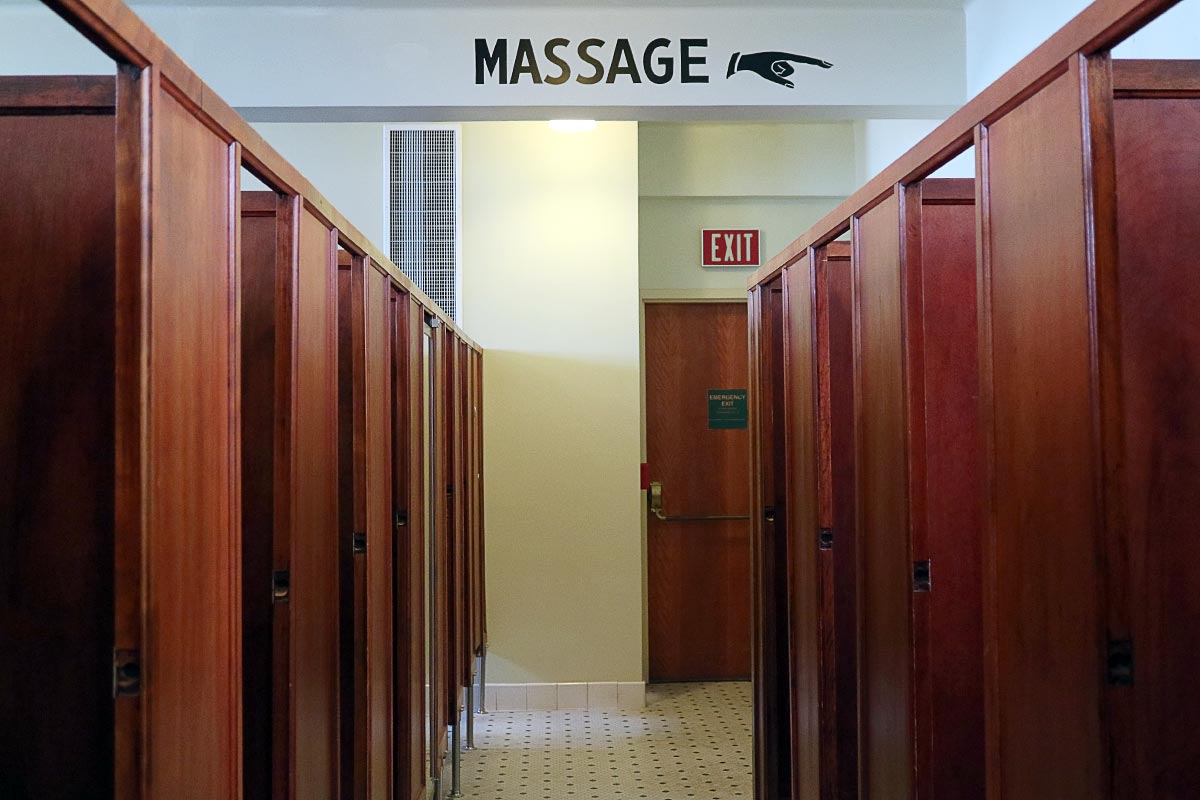
Unique among America’s parks, Hot Springs National Park is a series of buildings in the middle of a modern town. Never let it be said that the park system lacks variety.
The town of Hot Springs, Arkansas gets its name from the reliable and hot thermal springs around the area. People have been drawn to the area for centuries by the mineral-rich waters that have long been described in terms of their power to heal. Any ailment might be bettered with a good soak or several.
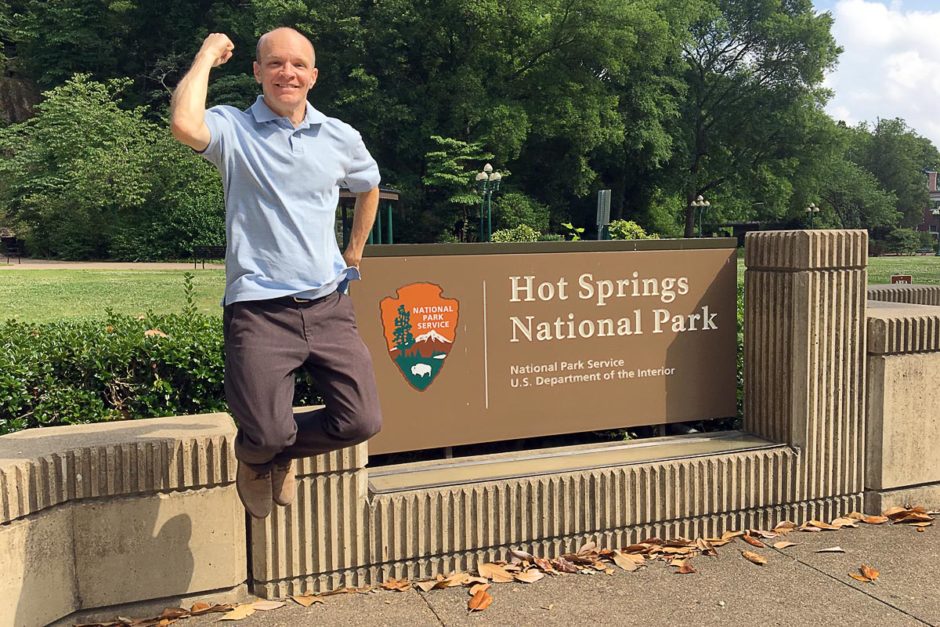
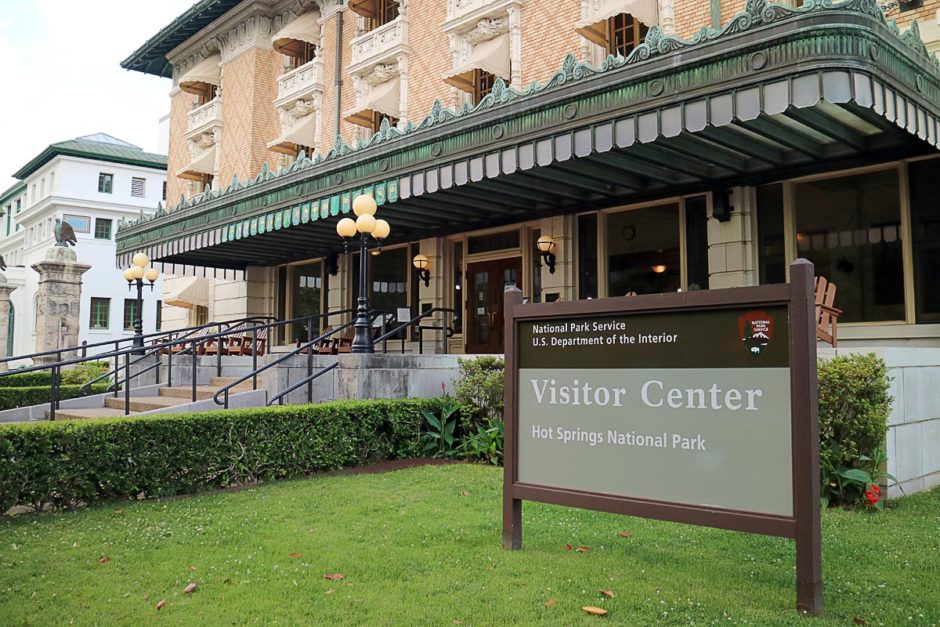
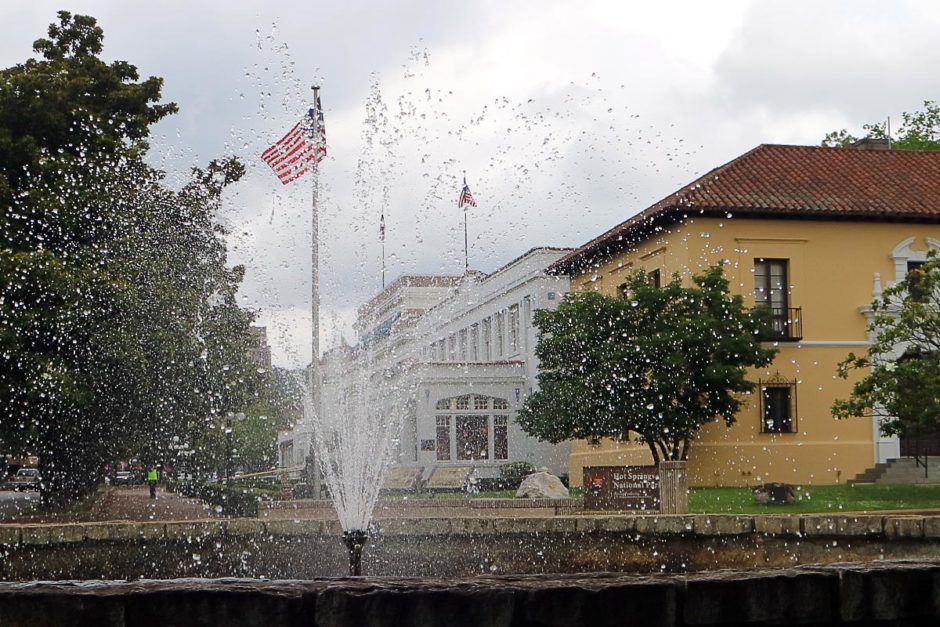
Several bathhouses spring up around the area, including several along the town’s main street. This now-paved thoroughfare is still called Bathhouse Row and while one side is comprised of modern shops and restaurants, the other side contains about half a dozen grand old buildings that once housed bath and steam services for the rich and poor alike. Two still offer spa, massage, and bathing services, while one is a museum and the official visitor center and the others are either closed to the public or reserved for special functions.
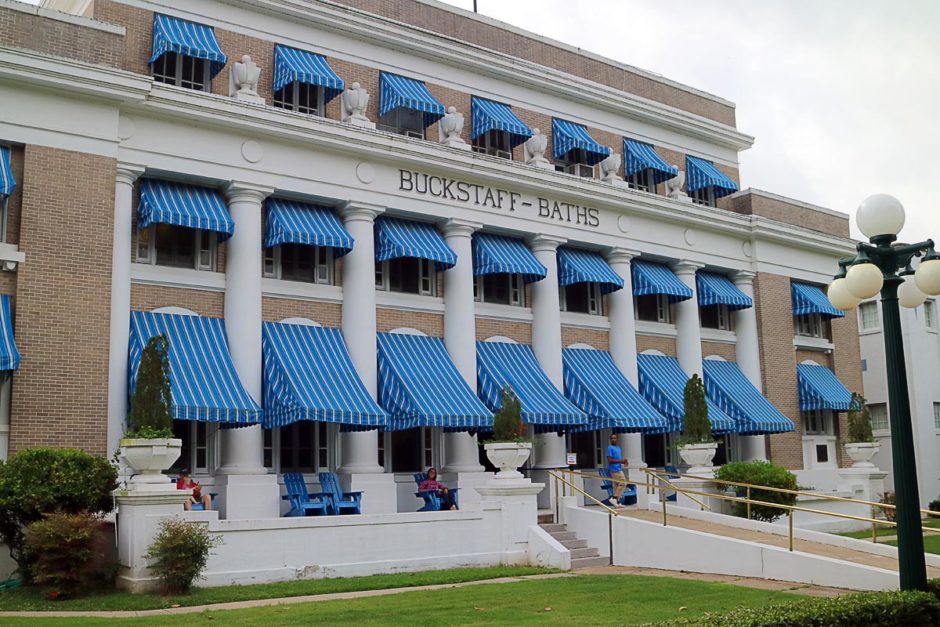
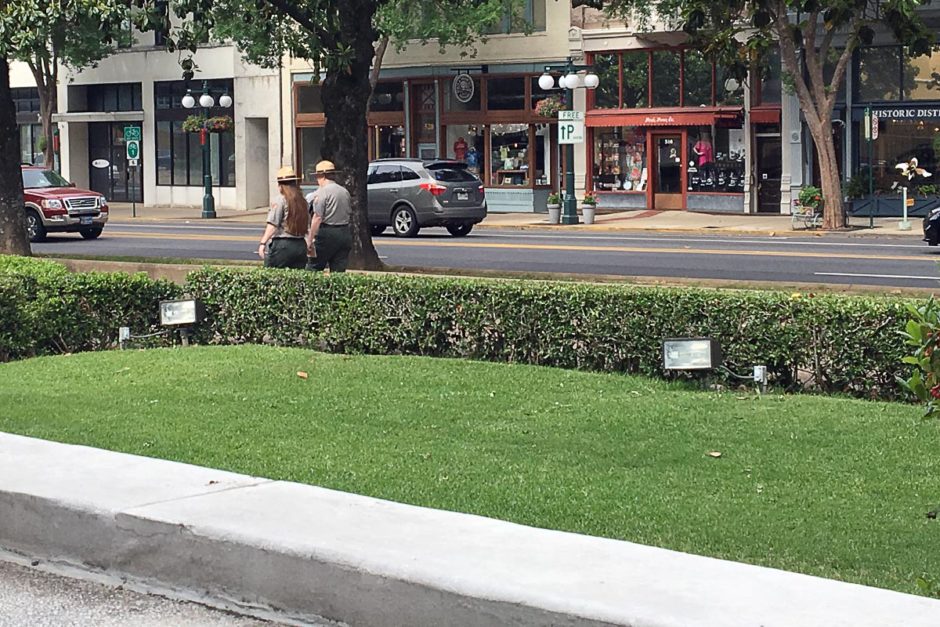
Hot Springs, AR: One of the few places you can regularly see park rangers strolling down the street.
After descending into and reappearing from Mammoth Cave National Park in Kentucky, Masayo and I were anxious to see what is likely to be the final Park east of the Mississippi River on this long road trip: from here on out it’s west, west, west. And we were excited to find out why such an unusual Park exists in the first place.
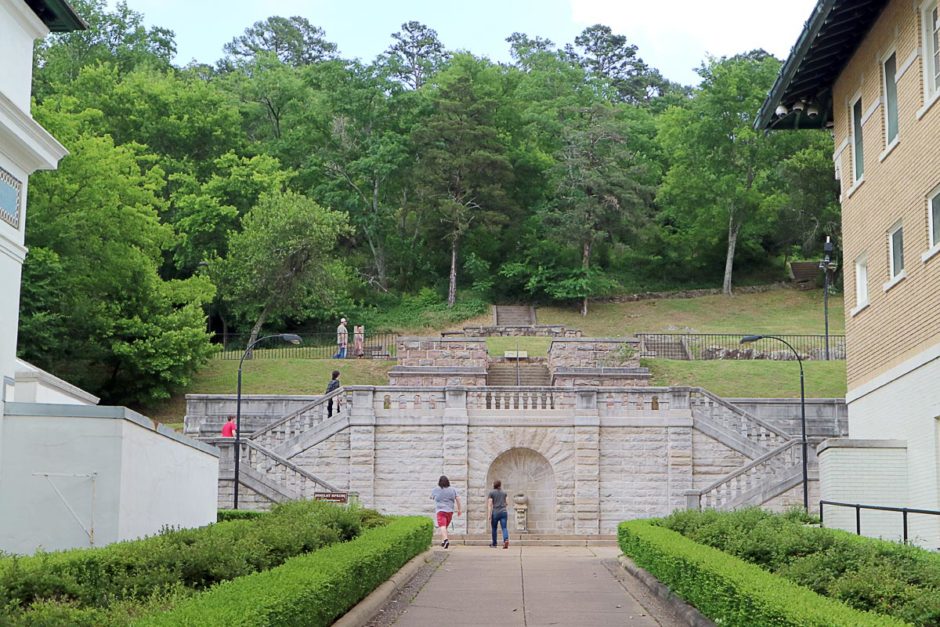
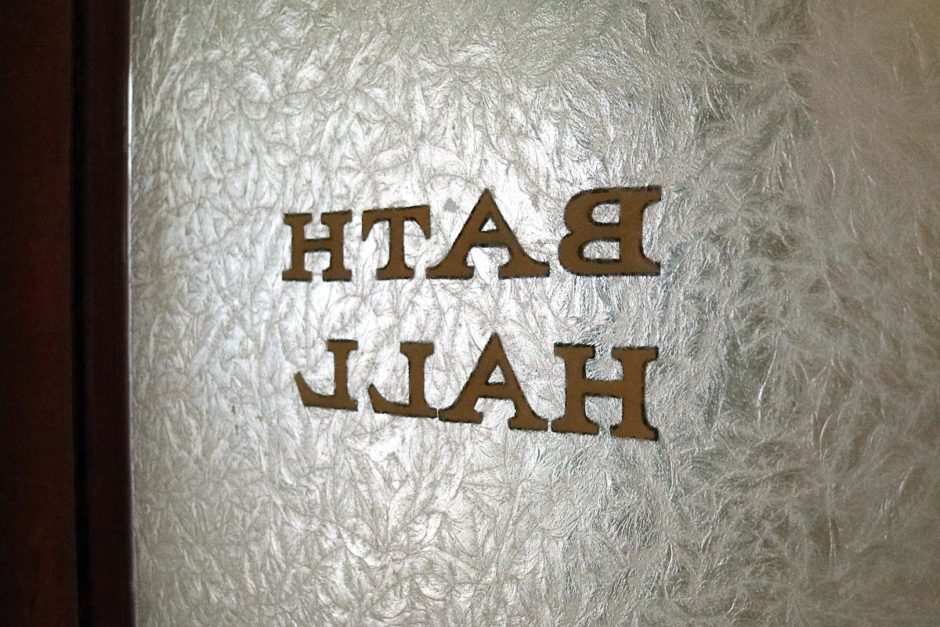
Actually, there is a little more to the Park than just the row of buildings. Incongruously, perhaps, the hillsides that rise from both sides of Bathhouse Row are also part of it, an they include some hiking trails, scenic drives, and a campground. It was the campground that we checked out first.
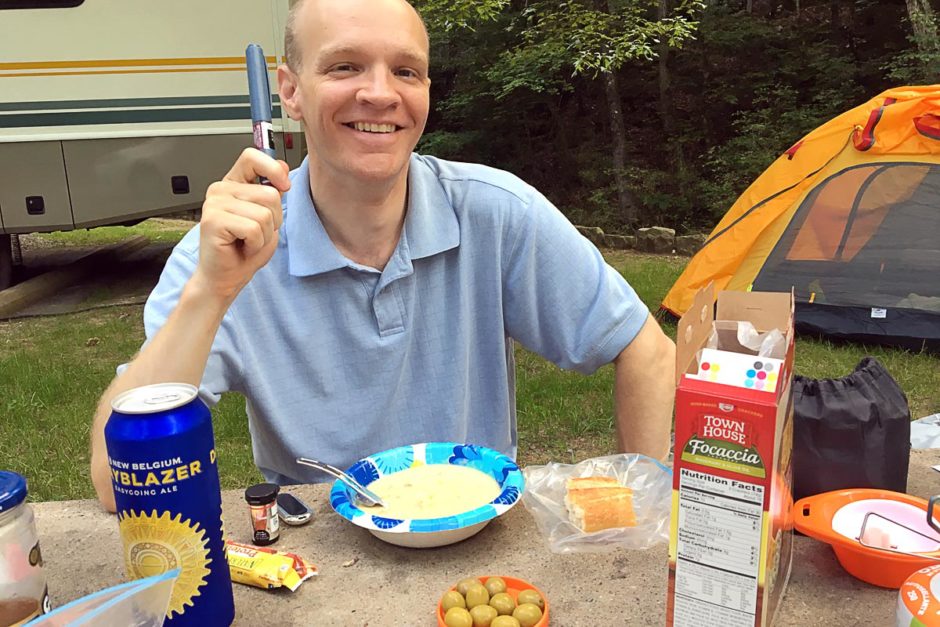
Dinner at the campsite.
So our first night in Hot Springs National Park was spent in a tent beside the car and had nothing to do with soaking in hot natural spring waters. But the campsite was nice, if a little too modern (I couldn’t scan the skies for stars at night because the campsite had street lights – a first on this trip certainly). Our neighbors were mercifully quiet, and the only sound was the softly chirping creek a few feet away.
In the morning we got up (early, as always when camping outside) and had breakfast over the camping stove. Of the two operational bathhouses, we had chosen Buckstaff to visit. Buckstaff is the only one that’s been in continuous operation even through the area’s lean years of the 1970s and 1980s (it opened in 1912) while Quapaw is a recently-reopened modern spa. Nice, but we wanted the older and more traditional.
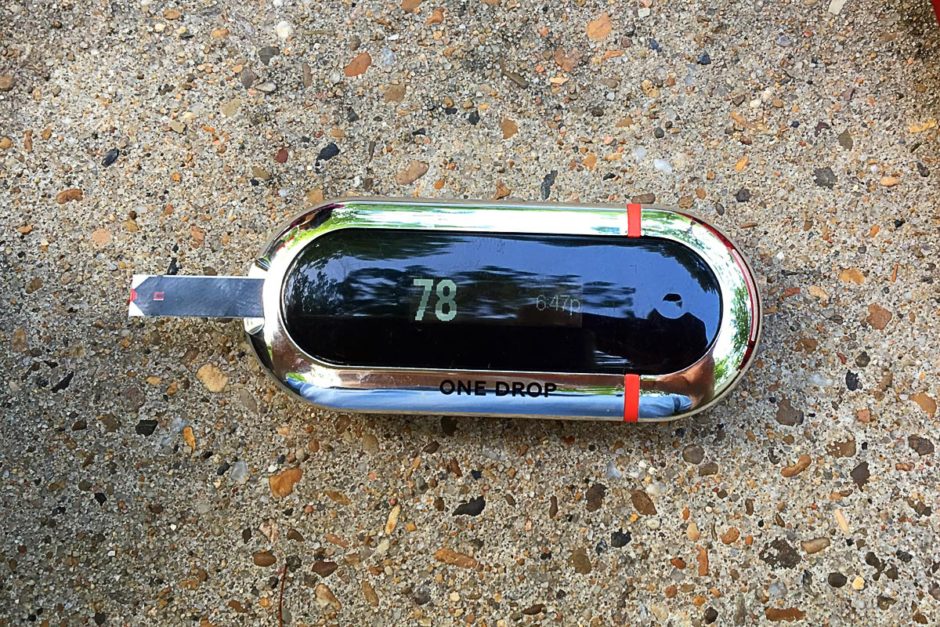
BG 78 before dinner of soup and beer at the campsite.
And they were opening at 8:00 am which was perfect for us: after brushing our teeth in the campsite bathrooms and packing up our gear (by which I mean tossing everything into the trunk) we drove back into town, found an actually-free “free parking” garage, and walked over to Buckstaff.
We paid $33 each and were whisked away to our respective gender-separated facilities. The first thing I did was take off my clothes and put them in a locker, putting the key around my wrist.
And then the soaking began.
My guide/assistant was named David, a friendly and relaxed-looking guy who would tell me where to go and hand me cups of pure drinking water. I wondered if he often took baths here himself. It would explain the contented smile and half-open eyes.
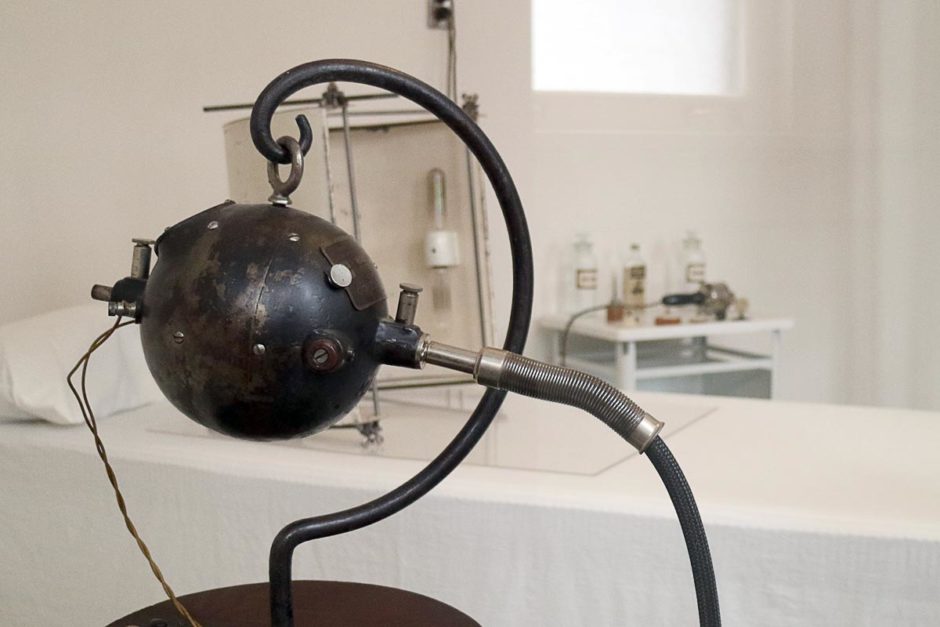
First I sat in a bathtub, an old-style white porcelain container with antique pipes and paraphernalia sticking in the warm water at my feet. I lay on my back, head just out of the water, and he turned on the bubble machine which roared to life with a mighty industrial clatter. For 20 minutes I lay in the fizzy water, the whole tub vibrating all around me. It was jarring, but this was how they did it back in the day. How space-age of them!
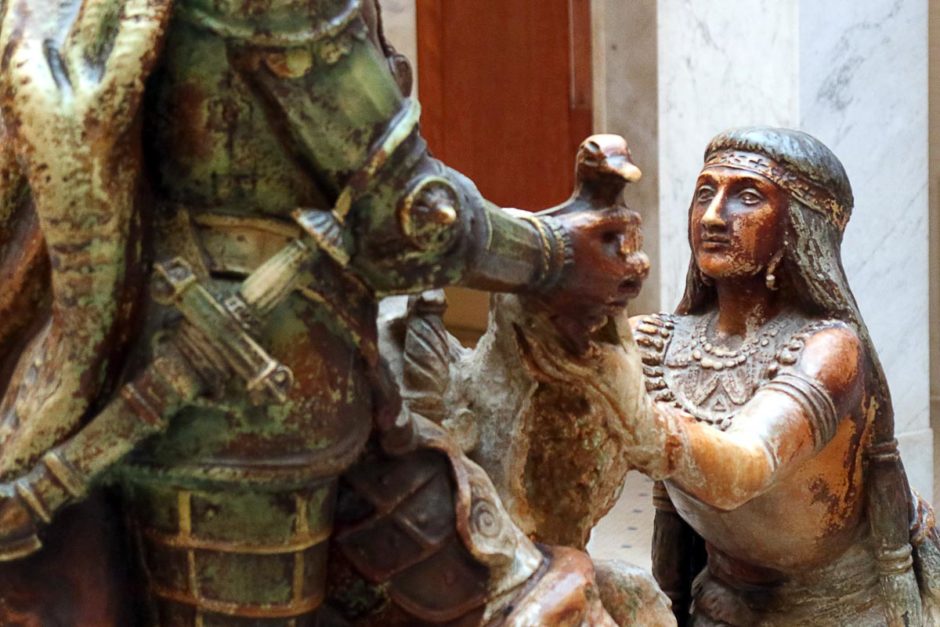
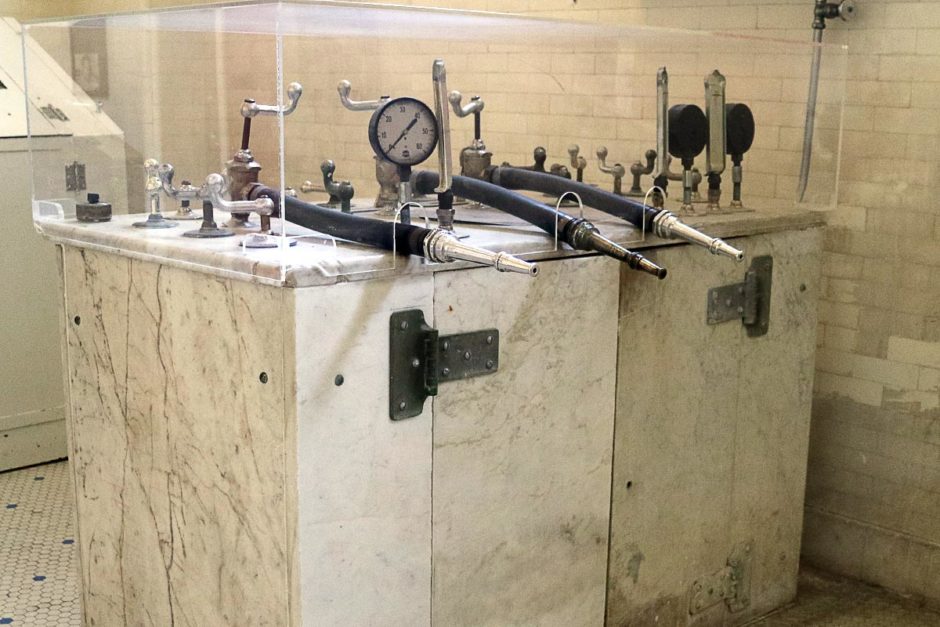
Next was about five minutes in something called a sitz bath, which is just a tiny wooden plank you sit on while hot water splashes onto your lower back. As a guy who has had lower back problems and who spends hours each day sitting in a car or sleeping on the ground, I loved this. As I sat there, towel draped tastefully over my lap, I pondered doing this same thing in hotel tubs. Just run the hot water and sit backwards next to the tap. Why not?
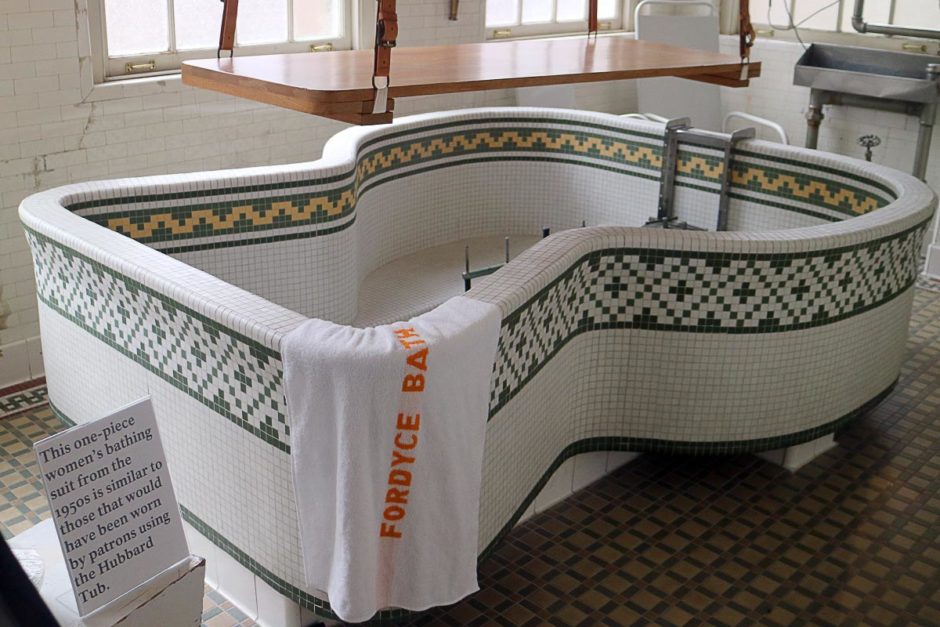
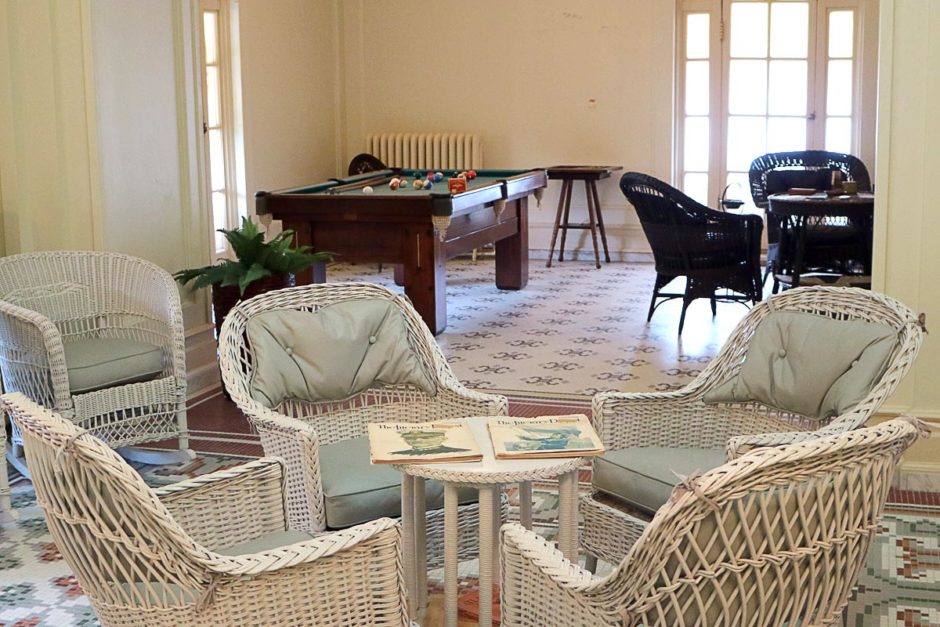
Next was what may be the highlight for many visitors: the pack. Lying on my back on a platform that resembled a hospital bed, David came and wrapped my shoulders and then my legs in two very hot, wet towels. Around my whole body he wrapped a white bed sheet and again walked off, leaving me to heat up for about ten minutes.
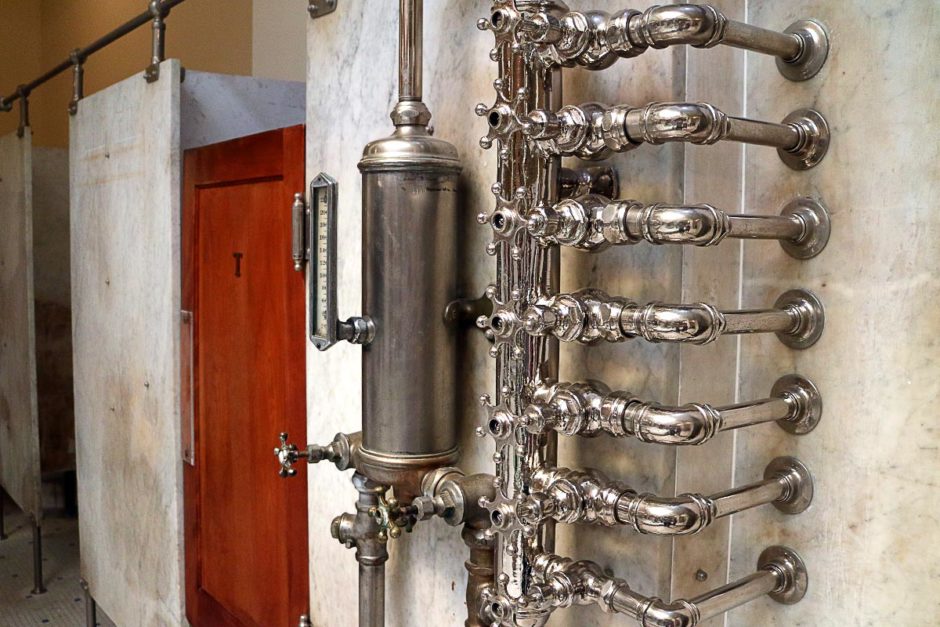
And heat up I did. Once I got used to the scalding hot towels, I settled into the situation. Japan, where I live, has an extensive spa culture and I’ve been to many such places there. I mentioned that to David when he came to check on me, and he remarked that it must be a different environment there. With a wan smile he confided that he found Buckstaff “sterile”.
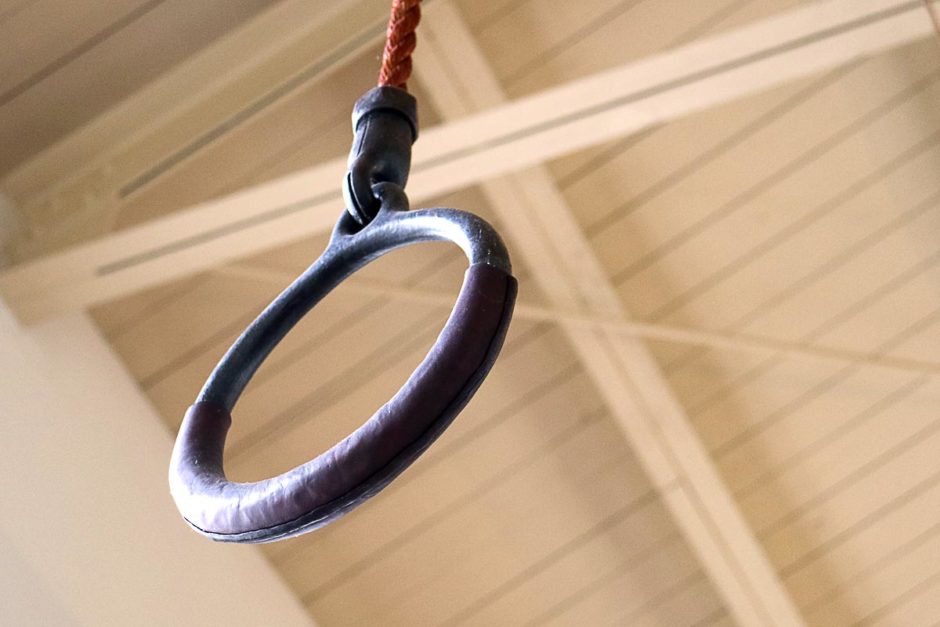
In its heyday, the bathhouse also offered a full gym.
And he was right: this was more like a health clinic. Everything in Buckstaff is white – the towels, the porcelain, the tiles, the lighting – or silver pipes. Quiet, humorless, and hospital-like. I liked it a lot for its antique and historic feel, but it isn’t like the wood, trees, and dark lighting of Japanese spas.
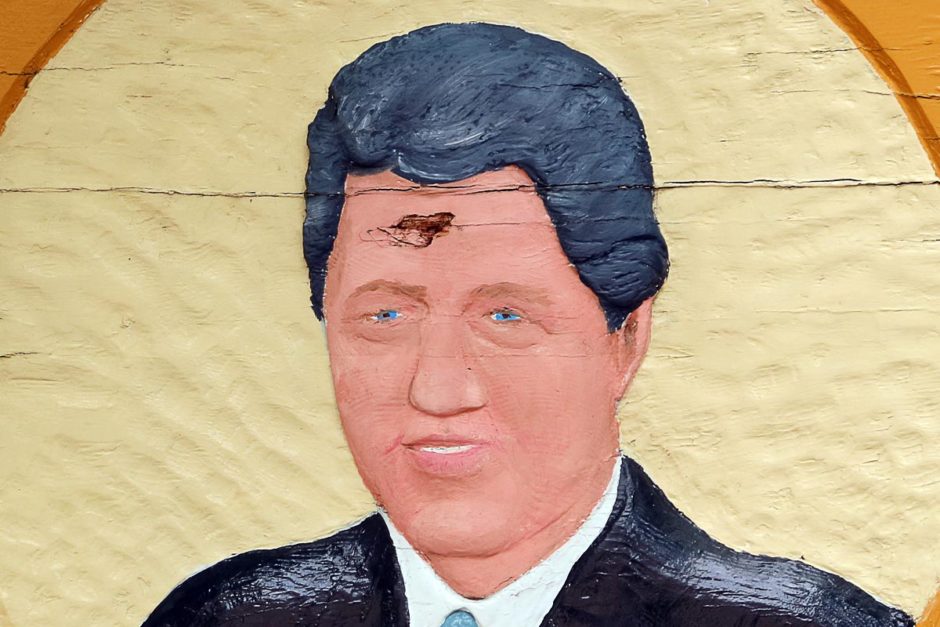
Bill Clinton grew up in Hot Springs. Judging by this sign downtown, someone is apparently not a fan.
Anyway, the towel wrap was over and it was time for the final station: the needle bath. I wasn’t sure what this was when I saw it on a sign earlier, but as a diabetic you can imagine that I was intrigued to find out. It turned out to be a small enclosed circular (and white) shower space with pipes running vertically around it, each full of holes. David turned a knob and warm water shot out of the holes, a few dozen small strong streams attacking my body all at once. It was basically a massage by water. Needle shower – of course!
By this time I was very curious about what my blood sugar might be – I hadn’t checked it since breakfast, and who knows what effect all this heat and moisture might be having on me? But I was determined to see this experience through to the end thanks to the Buckstaff Baths brochure, which advised people with diabetes against taking baths there at all. As if!
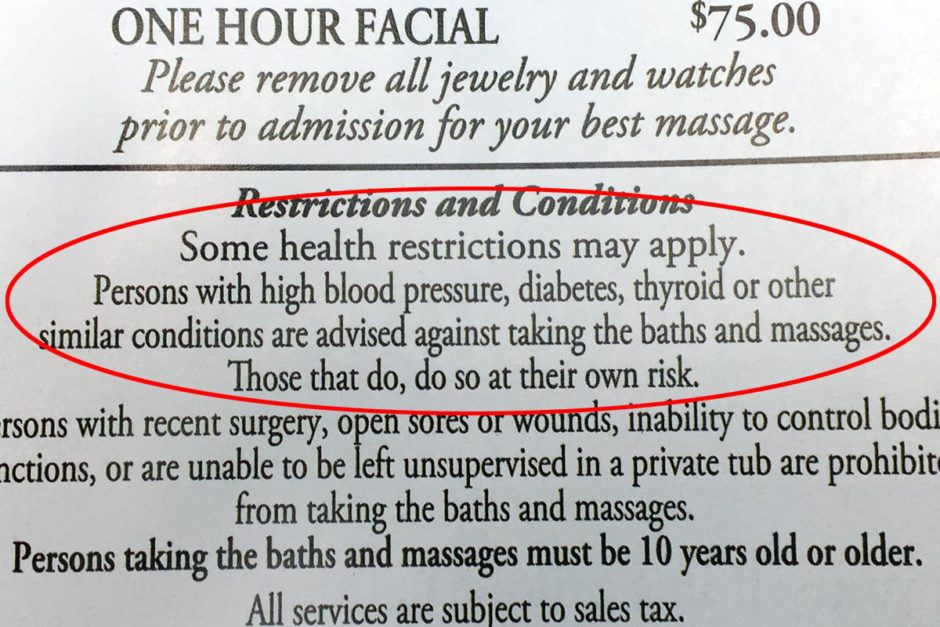
From the Buckstaff brochure. Sounds like a challenge to me.
Joining up with Masayo on the porch afterwards, I found that her program was just like mine but had also included a climb into a steam box – a large metal washing-machine looking contraption with a hole for your head. She sat on a ledge inside, only her head visible. I don’t know why mine didn’t include that but I was jealous.
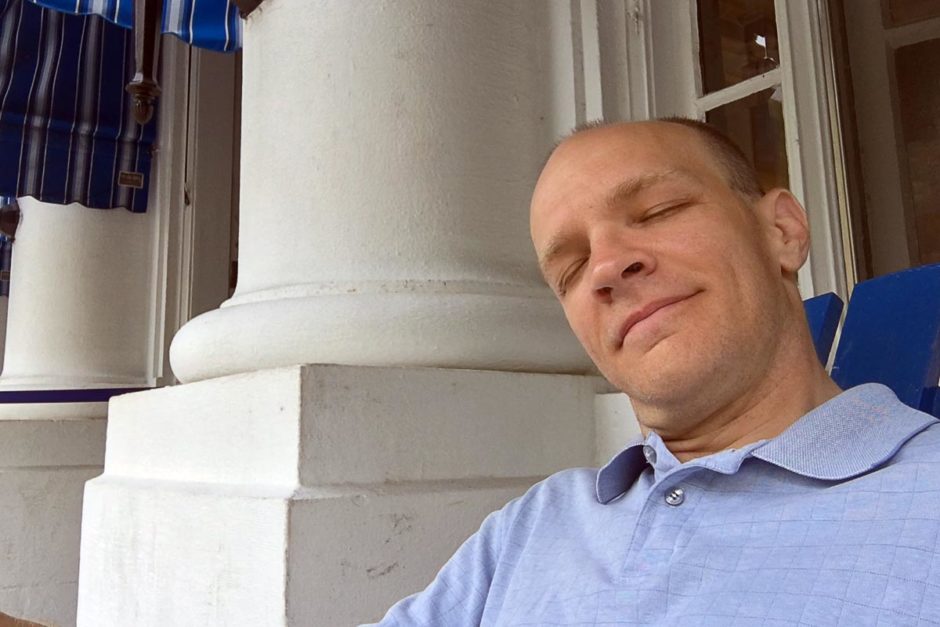
What a relaxed customer looks like after the bath. BG was 142.
We had planned on doing a hike but were now feeling so relaxed that we talked ourselves out of it. Instead we had lunch at the cafe in Quapaw Bathhouse then took some scenic drives up in the hills above town. The views were very nice, especially from the large tower. You can look out over the Ouachita Mountains (pronounced “WAH chee tah”), the rolling green hills that make this part of Arkansas so attractive.
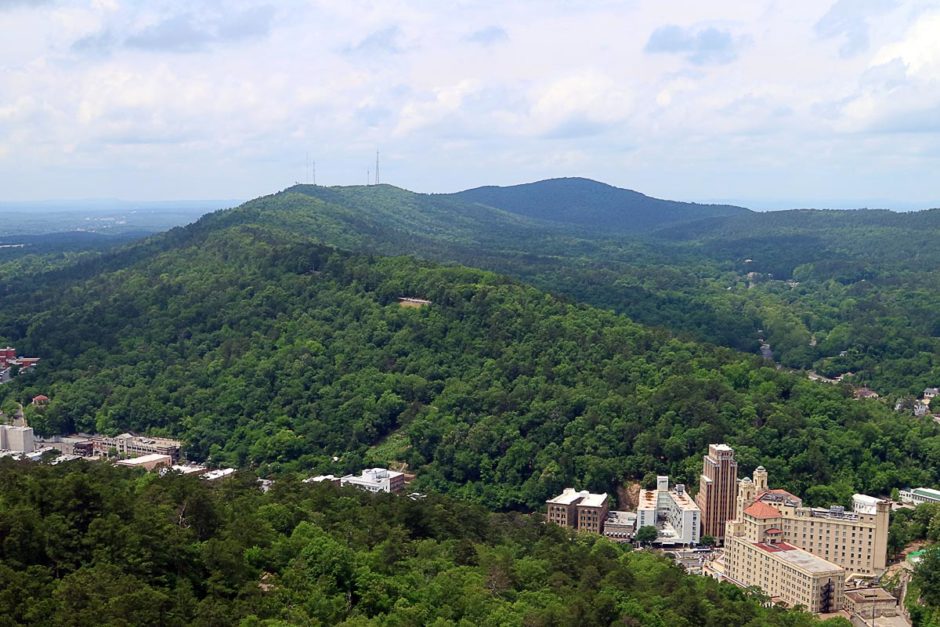
And by then we felt like we’d seen Hot Springs National Park. We’d had a series of antiquated 1920s-era baths, looked out over the surrounding area from the top of the tower, and got our souvenirs and stamps from the gift shop. Hot Springs may be unusual in the park system but, built around a geothermal marvel and still offering visitors a direct experience with nature, it’s a great destination and an easy and relaxing park to take in.
Thanks for reading. Suggested:
- Share:
- Read next: Day 45: Colorful ecotones in Chickasaw Nat'l Recreation Area
- News: Newsletter (posted for free on Patreon every week)
- Support: Patreon (watch extended, ad-free videos and get other perks)

Support independent travel content
You can support my work via Patreon. Get early links to new videos, shout-outs in my videos, and other perks for as little as $1/month.
Your support helps me make more videos and bring you travels from interesting and lesser-known places. Join us! See details, perks, and support tiers at patreon.com/t1dwanderer. Thanks!
